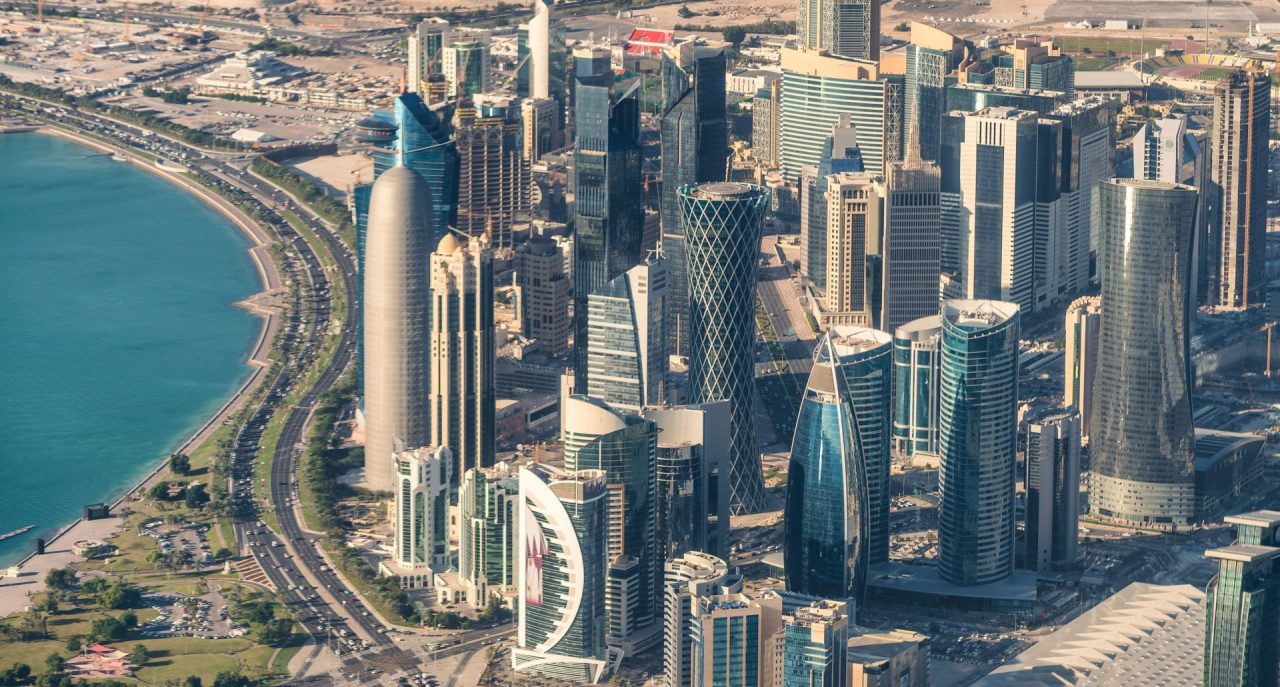The Qatar World Cup will be the first edition of the major soccer tournament ever held during the month of December, as well as the first to take place in the Middle East. With just over a year to go until the sporting event kicks off, its financial implications are starting to be weighed. Qatar has invested a great deal in the mega-event, including in the revamping of its national infrastructure.
Recently, Hassan Al Thawadi, Secretary General of the Committee for Delivery and Legacy, spoke directly about the event’s anticipated economic impact: “We anticipate the contribution to the economy essentially would be around $20 billion (€17 billion),” he said. That’s approximately 11% of Qatar’s GDP in 2019, prior to the onset of the pandemic.
The economic boost will benefit a number of sectors, including infrastructure.
$300 billion (€257 billion) for the large-scale works of the future
In addition to building stadiums specifically to host World Cup matches, Qatar has been investing — and continues to invest — in modernising its infrastructure. The goal is to become more of a transport hub for a significant portion of the globe. Top priorities are the development of airports, as well as a more extensive metropolitan network, along with upgraded roadways and emerging cities. According to a report from Bloomberg, the organizers of last summer’s Qatar Economic Forum, World Cup-related infrastructure projects are currently valued at $300 billion (€257 billion).
“The World Cup is meant to serve as an engine to push forward and accelerate a lot of the initiatives that the government has already committed to, already had planned, whether that’s in terms of urban development or economic diversification,” Al Thawadi continued.
While some of the projects will have a long-term impact, the government already has many initiatives in place with concrete short-term benefits. For the medium term, the Qatari government has identified several urgent projects, earmarking QR54 billion ($15 billion) for these. In the second quarter of 2021, spending on major infrastructure projects totaled QR15 billion ($4 billion) —20.8% of the state’s spending budget.
Some of these funds were spent on roads, bridges, and subway lines, but a substantial portion was also spent on water infrastructure, particularly new water treatment plants.
Projects expected to be completed by the end of 2021 include the Lusail Light Rail, a revamped Old Port of Doha, and the Sabah Al-Ahmad road corridor.

Infrastructure: an industrial boom that will continue through 2026
The boost that the 2022 World Cup will bring to the construction market won’t be over once the champions bring home their trophies. Construction sites opened in recent years, fueled by long-term planning for Qatar’s transformation, will continue to impact the large-scale works industry.
According to a report by Mordor Intelligence, an international consultancy firm in the sector, Qatar’s construction market will be valued at $76.98 billion (€66 billion) by 2026, setting its average annual growth at 10.54% for the period from 2021-2026.
The report reads: “Construction activity in the country remains resilient, as government spending has continued on projects. The government’s aim to diversify the economy, emphasizing non-oil sectors, is expected to drive funding toward construction projects over the forecast period.”
The National Vision Plan 2030 — an investment plan focused on building large-scale works aimed at modernizing cities and fostering their sustainable growth — is going to be a real driver of both the economy and of development over the next few years. According to the World Bank’s latest Gulf Economic Update, Qatar’s GDP will grow by 3% in 2021, 4.1% in 2022 and 4.5% in 2023.
The “spark” of the World Cup
Qatar’s commitment to host the 2022 World Cup has been a key driver of its development ambitions, as well as the revival of its construction industry.
In preparation for this global event alone, the government announced a $103 billion (€88 billion) allocation to be spent on key infrastructure projects. Construction of athletic venues including the Al Bayth Stadium are in the lineup. A project of the Webuild Group, Al Bayth is one of the most modern and sustainable structures in terms of is technical features.
However, while around $10 billion (€8.5 billion) has been earmarked for infrastructures specifically for the World Cup, the rest of the funds have been allocated to modernizing infrastructure, from subways to roads and airports.
Development of these new works, guided by the principles of sustainability and urban regeneration, will help establish Qatar as one of the region’s most modern countries.

